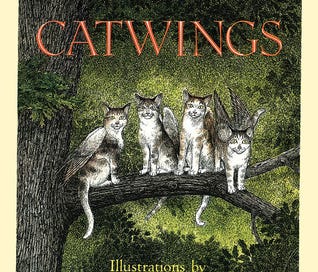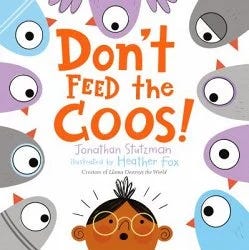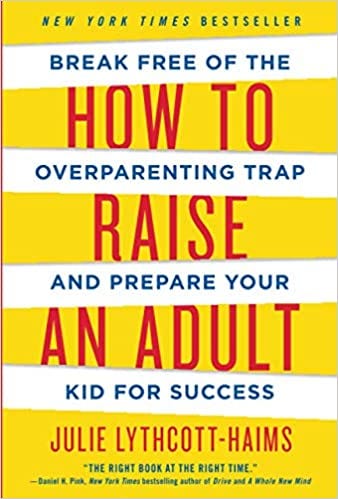Dear Reader,
Welcome to the second issue of One More Page. Before I got into the meat of the newsletter, I wanted to start off by saying that not every morning is filled with calm mornings with my children where we read a book and go off to school or daycare with smiles to take on the day. You’ll read about what a typical morning looks like right now and how I incorporate reading into it, but it doesn’t happen every morning. For instance, this morning was a cluster with Ramona wanting to wear an excessive amount of Bandaids so we spent some time in the Calming Corner in lieu of reading at the breakfast table.
My ideal weekday morning consists of breakfast in bed, no crying children, meditating for at least 10 minutes, etc. But what really happens is this: my alarm goes off around the same time as Matilda’s and my husband is usually gone for the day or already up and getting ready for the day.
Matilda comes into our bedroom for a few snuggles, then we go downstairs and she starts to make breakfast for her and her sister (Note: this is a new chore for my six year old, as inspired after reading How to Raise An Adult–see below for more info). I try to get in a few sips of coffee and make my breakfast if there’s time. Then fifteen minutes later Ramona’s alarm goes off and I go back upstairs to get her out of her crib. We eventually make our way back downstairs, and usually Matilda has finished making breakfast for her and her sister. They start to eat breakfast, and I finish making my own before sitting down to eat and read with them.
Lately, we’ve been enjoying an early chapter book called Catwings by Ursula K. Le Guin (more on that below) but my three year old is still learning to listen to chapter books. I ask Matilda what happened in the book from our reading session the day before to not only help Ramona string together the story but also to remind ourselves what had happened (sometimes I forget!). We usually read about a chapter. If things are going well, and we have time, we’ll also read a picture book. Or sometimes the kids want a break from the chapter book and would prefer to just read a picture book. Then the kids finish up their breakfast (me too!) and they get themselves dressed (Matilda needs more help in this department). I get lunchboxes out and pack the kid’s bags and we head into the car for school dropoff.
Reading in the morning is one of my favorite times because it feels very meditative. The kids will be quiet and listen to the story while eating their breakfast. Sometimes I stop and ask questions about the story and we discuss the book, which is a topic for another week. Sometimes we don’t stop to discuss the story, and that’s fine, too. It all depends on timing and our temperaments in the morning.
Then we all rush out the door so that I can drop them off at school and daycare. I pick them up from school in the early afternoon. Sometimes they have extracurricular activities after school and sometimes they don’t. Usually the next time they have a chance to read is before bed at night. Bedtime can be chaotic, especially if you have little children, which is why I don’t enjoy reading to them at that time versus reading to them in the morning. Plus, many nights I’m tackling bedtime by myself as my husband works late hours, so I’m exhausted by the time the kids sit on my lap for a story.
As I mentioned previously, we do find reading meditative in our house, and it is a staple in the bedtime routine, so we do make time for it, even for a short “Good night” book. We start off in Ramona’s room with the kids snuggled on my lap. Many times, Matilda will read a book to her sister or she’ll read every other page. We sing a song or two, and then I put Ramona down in her crib. We say goodnight to her and then go into Matilda’s room. Sometimes I’ll read a chapter from an early chapter book with Matilda, depending on the time. Sometimes Matilda will request her own reading time. Recently, Matilda has been meditating before bed, so now will be a time when I set up a Headspace guided meditation for kids to play on a bluetooth speaker. We say good night and start it all over again the next day.
If you have the time, try reading to your children in the morning or at another time outside your usual reading time. The novelty of the activity may fade over time but it may be an additional or alternative time to read with your children when you just can’t muster the energy for another book before bedtime.
Sincerely yours in reading,
Emily
YOUR READING QUESTIONS ANSWERED
If you have a reading dilemma or question, please write in with your thoughts! You can leave a comment below or write to me at emilyheroy@gmail.com. If you write, I may publish your question in an upcoming newsletter with your permission.
CURRENTLY READING
Read alouds with children
Catwings by Ursula K. Le Guin (1988)
Down an alley in a dumpster, Mrs. Jane Tabby gives birth to four kittens. But these are no ordinary offspring each has a pair of wings. Although Mrs. Tabby is unperturbed by her kittens' appearance, her neighbors are not so charitable; when the kittens are old enough to fly, Mrs. Tabby sends her children out into the world. Because both winged and four-footed creatures mistrust them, the kittens have trouble finding a place to live, but eventually discover a loving home. - from Publishers Weekly
Cats! With wings! My kids are in a I-want-a-pet phase (we don’t have one and we don’t plan on getting one until Ramona goes to school) and so this is especially intriguing that the cats have wings. The illustrations remind me of the illustrations from Owl Babies.
Don’t Feed the Coos written by Jonathan Stuzman illustrated by Heather Fox (2020)
Married collaborators Stutzman and Fox (Llama Destroys the World) present the darkly comic—and maybe even existential—hazards presented by a whole flock of pigeons (“coos”) in this send-up of cause-and-effect titles such as If You Give a Mouse a Cookie. “If you feed one”—a child stands with a bag of bread, beguiled by a small gray coo—“they will ALL come.” Quickly surrounded, the child is tailed by coos (“through the park,/ down the street.../ Even at karate lessons”) who never stop eating and poo with impunity (“coo poos covering everything”). “No matter what scheme you cook up,” the narrator cautions as a variety of “Go Away” signs are installed, “your plans. Will. FAIL.” Should the child capitulate (“Just accept your fate..../ Give them names./ Knit them scarves”), or could it be that someone who truly loves the coos is missing them terribly? Fox’s graphic illustrations echo the text’s giddy rhythms, with the pigeons styled, Willems-like, as pert, wide-eyed, always-in-profile graphic motifs that skip, flit, and, yes, poo prodigiously across the pages. - from Publishers Weekly
We checked this one out from the library after reading Llama Destroys the World and I might just like this one better. When we first read this book, Matilda asked, “The illustrator must be Mo Willems!” (She was thinking of Don’t Let the Pigeon Drive the Bus). I concur with this observation.
Books I’m reading
How to Raise an Adult: How to Break Free from the Overparenting Trap and Prepare Your Kid for Success by Julie Lythcott Haims (2015)
Former Stanford University dean Lythcott-Haims presents a convincing vision of overprotected, overparented, overscheduled kids in this report on the current state of childhood and parenting in middle- and upper-class families. Lythcott-Haims, the mother of two teens, counts herself among those who have taken far too many aspects of their children’s lives into their own hands. Today’s young adults, she asserts, lack life skills and resilience; they can’t competently make decisions, manage risk, overcome setbacks, or take charge. Along with overprotection, she sees a trend toward racing kids onto a fast track, with unreasonable pressures to get into highly selective colleges. After presenting the problem in detail (through interviews with college admissions officers, educators, parents, and others), she offers a number of viable solutions, encouraging parents to nurture kids’ unique gifts rather than mold them like “little bonsai trees” and to help them develop life skills (e.g., doing chores, critical thinking, public speaking). She also claims that lower-income kids are more likely to end up with the grit necessary for success, while elite grads struggle to grow up. The overparenting trend, Lythcott-Haims contends, is harmful not only to kids but also to parents who are stressed and overscheduled themselves. This vigorous text will give parents the backup needed to make essential changes. - from Publishers Weekly
Some of the stories that Lythcott-Haims tells horrify me: parents meeting with college advisors to discuss course lists, parents waking up their college-aged children for classes, etc. In general, it made me understand why overparenting is harmful. I realized that I needed to give my older daughter more autonomy and teach her life skills. Hence why she’s making breakfast for herself and her sister every morning. It’s not perfect (the other day she burned her finger with the toaster) but she’s learning.
END MATTER
-If you have a reading dilemma or question, please write in with your thoughts! You can leave a comment below or write to me at emilyheroy@gmail.com. If you write, I may publish your question in an upcoming newsletter with your permission.
-Most of the book links are to Bookshop unless it wasn’t available then I linked to the Library of Congress. I’m not affiliate of Bookshop so I won’t make any money if you click on the links, but I plan to be an affiliate in the future.
-Please recommend One More Page to friends and family who you think would enjoy this.







Ahhh substack ate my comment, let's try again. Ollie learned to pour cereal and milk for him and P a couple of years ago, and it's been magic. He can also turn the tv on which means on the weekends, an extra hour of sleep for us :) I also love reading in the morning - I've been trying to develop a habit of reading for 15-30m or so before starting work instead of doing the endless doomscrolling. It's such a better way to start the day.